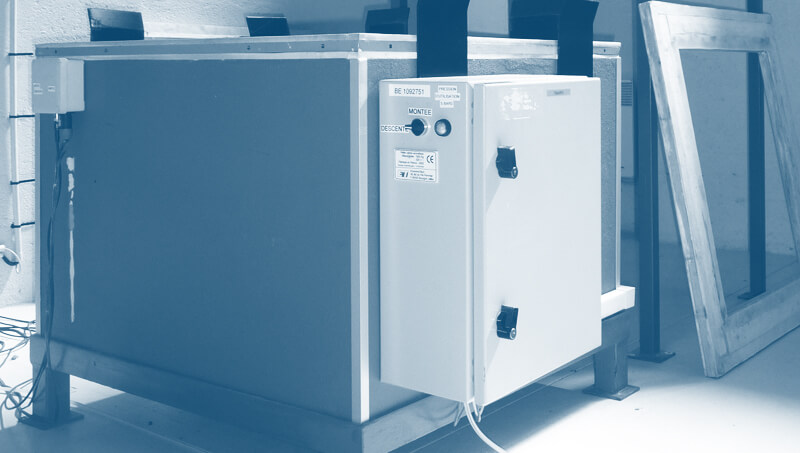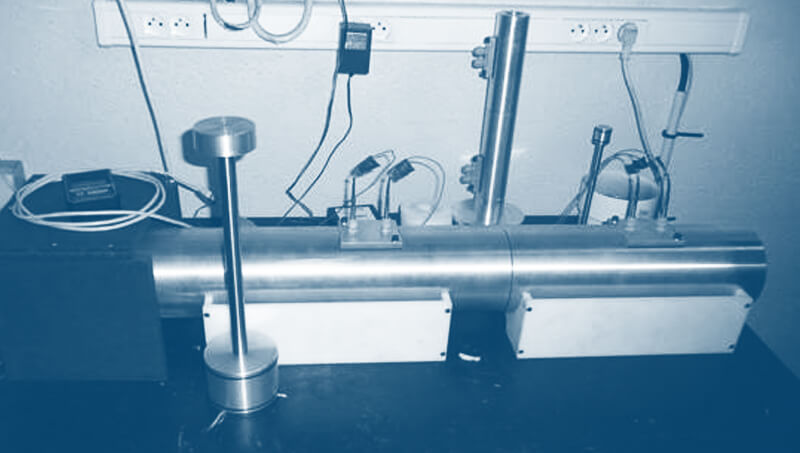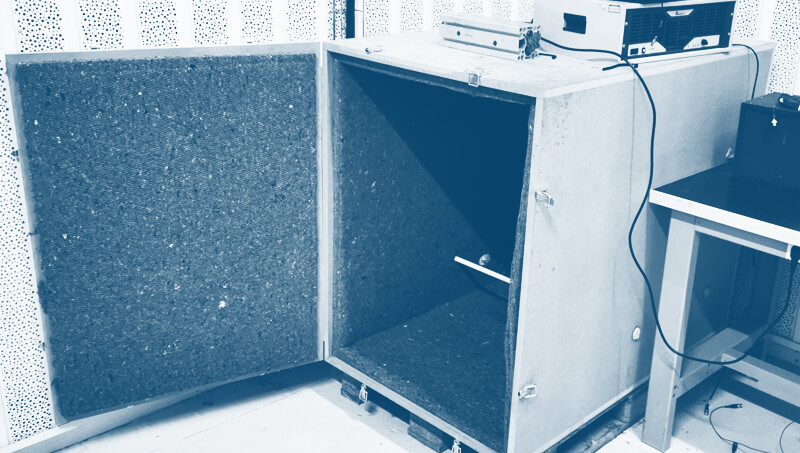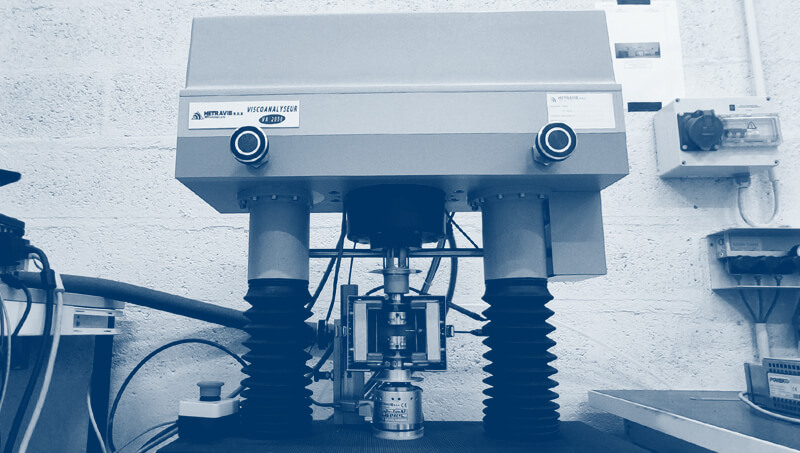Oberst method
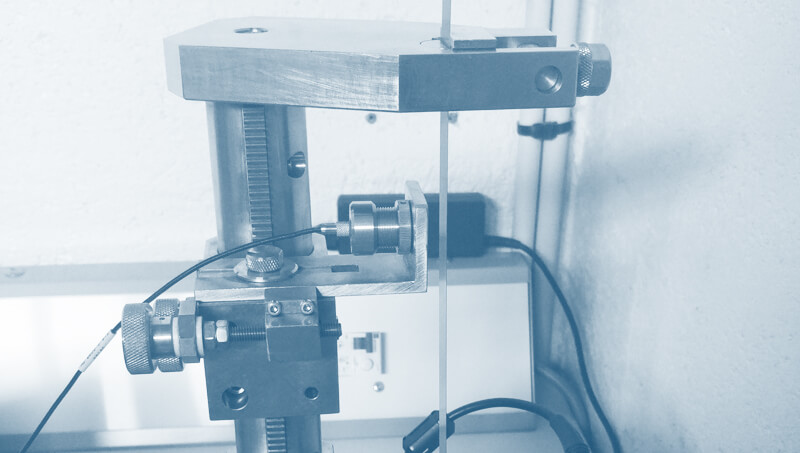
The CEVAA has an Oberst beam for measuring the storage modulus E’ and the material loss factor.
Composition of the equipment: The test means is composed of a magnetic exciter, a non-contact speed sensor and a system allowing the embedding of the specimens.
Dimensions of specimens tested: L x W x Thickness = 250x10x1mm
Oberst method
The impact of materials on the bending vibrations of a beam is studied by the resonance method (Oberst method) according to standard EN ISO 6721-3 [1].
We seek to identify the moduli of elasticity in bending and the average dampings of the materials and to compare them for the second mode of bending of the beam. The identification is carried out by the method at -3 dB from the frequency response functions and the sandwich beam theory (Obert).
Testing conditions
- The samples are glued to the beam using Loctite 407 glue.
Measurements / calculations made
- Determination of Young’s modulus and loss factor
Examples of completed projects
- Innovative materials characterization
Materials characterization benches
For more information, contact us to discuss technically on your needs!

